+ Open data
Open data
- Basic information
Basic information
| Entry |  | |||||||||
|---|---|---|---|---|---|---|---|---|---|---|
| Title | Human GluN1-2A with IgG 008-218 | |||||||||
 Map data Map data | ||||||||||
 Sample Sample |
| |||||||||
 Keywords Keywords | Channel / heterotetramer / receptor / antibody / MEMBRANE PROTEIN-IMMUNE SYSTEM complex | |||||||||
| Function / homology |  Function and homology information Function and homology informationexcitatory chemical synaptic transmission / directional locomotion / Synaptic adhesion-like molecules / serotonin metabolic process / activation of cysteine-type endopeptidase activity / protein localization to postsynaptic membrane / propylene metabolic process / response to glycine / sleep / regulation of monoatomic cation transmembrane transport ...excitatory chemical synaptic transmission / directional locomotion / Synaptic adhesion-like molecules / serotonin metabolic process / activation of cysteine-type endopeptidase activity / protein localization to postsynaptic membrane / propylene metabolic process / response to glycine / sleep / regulation of monoatomic cation transmembrane transport / Assembly and cell surface presentation of NMDA receptors / NMDA glutamate receptor activity / Neurexins and neuroligins / NMDA selective glutamate receptor complex / calcium ion transmembrane import into cytosol / glutamate binding / glutamate receptor signaling pathway / protein heterotetramerization / positive regulation of calcium ion transport into cytosol / positive regulation of reactive oxygen species biosynthetic process / glycine binding / startle response / Negative regulation of NMDA receptor-mediated neuronal transmission / Unblocking of NMDA receptors, glutamate binding and activation / dopamine metabolic process / monoatomic cation transmembrane transport / regulation of neuronal synaptic plasticity / monoatomic cation transport / Long-term potentiation / excitatory synapse / ligand-gated monoatomic ion channel activity / positive regulation of excitatory postsynaptic potential / calcium ion homeostasis / synaptic cleft / MECP2 regulates neuronal receptors and channels / glutamate-gated calcium ion channel activity / EPHB-mediated forward signaling / sensory perception of pain / response to amphetamine / ionotropic glutamate receptor signaling pathway / Ras activation upon Ca2+ influx through NMDA receptor / neurogenesis / positive regulation of synaptic transmission, glutamatergic / regulation of membrane potential / excitatory postsynaptic potential / synaptic transmission, glutamatergic / synaptic membrane / long-term synaptic potentiation / transmitter-gated monoatomic ion channel activity involved in regulation of postsynaptic membrane potential / postsynaptic density membrane / brain development / visual learning / cytoplasmic vesicle membrane / protein catabolic process / regulation of synaptic plasticity / negative regulation of protein catabolic process / terminal bouton / memory / response to wounding / synaptic vesicle / signaling receptor activity / presynaptic membrane / amyloid-beta binding / RAF/MAP kinase cascade / chemical synaptic transmission / postsynaptic membrane / response to ethanol / dendritic spine / postsynaptic density / learning or memory / calmodulin binding / neuron projection / positive regulation of apoptotic process / response to xenobiotic stimulus / glutamatergic synapse / dendrite / calcium ion binding / synapse / endoplasmic reticulum membrane / protein-containing complex binding / cell surface / positive regulation of transcription by RNA polymerase II / zinc ion binding / plasma membrane / cytoplasm Similarity search - Function | |||||||||
| Biological species |  Homo sapiens (human) Homo sapiens (human) | |||||||||
| Method | single particle reconstruction / cryo EM / Resolution: 3.7 Å | |||||||||
 Authors Authors | Michalski K / Furukawa H | |||||||||
| Funding support |  United States, 1 items United States, 1 items
| |||||||||
 Citation Citation |  Journal: Nat Struct Mol Biol / Year: 2024 Journal: Nat Struct Mol Biol / Year: 2024Title: Structural and functional mechanisms of anti-NMDAR autoimmune encephalitis. Authors: Kevin Michalski / Taha Abdulla / Sam Kleeman / Lars Schmidl / Ricardo Gómez / Noriko Simorowski / Francesca Vallese / Harald Prüss / Manfred Heckmann / Christian Geis / Hiro Furukawa /   Abstract: Autoantibodies against neuronal membrane proteins can manifest in autoimmune encephalitis, inducing seizures, cognitive dysfunction and psychosis. Anti-N-methyl-D-aspartate receptor (NMDAR) ...Autoantibodies against neuronal membrane proteins can manifest in autoimmune encephalitis, inducing seizures, cognitive dysfunction and psychosis. Anti-N-methyl-D-aspartate receptor (NMDAR) encephalitis is the most dominant autoimmune encephalitis; however, insights into how autoantibodies recognize and alter receptor functions remain limited. Here we determined structures of human and rat NMDARs bound to three distinct patient-derived antibodies using single-particle electron cryo-microscopy. These antibodies bind different regions within the amino-terminal domain of the GluN1 subunit. Through electrophysiology, we show that all three autoantibodies acutely and directly reduced NMDAR channel functions in primary neurons. Antibodies show different stoichiometry of binding and antibody-receptor complex formation, which in one antibody, 003-102, also results in reduced synaptic localization of NMDARs. These studies demonstrate mechanisms of diverse epitope recognition and direct channel regulation of anti-NMDAR autoantibodies underlying autoimmune encephalitis. | |||||||||
| History |
|
- Structure visualization
Structure visualization
| Supplemental images |
|---|
- Downloads & links
Downloads & links
-EMDB archive
| Map data |  emd_43539.map.gz emd_43539.map.gz | 230.1 MB |  EMDB map data format EMDB map data format | |
|---|---|---|---|---|
| Header (meta data) |  emd-43539-v30.xml emd-43539-v30.xml emd-43539.xml emd-43539.xml | 18 KB 18 KB | Display Display |  EMDB header EMDB header |
| Images |  emd_43539.png emd_43539.png | 90 KB | ||
| Filedesc metadata |  emd-43539.cif.gz emd-43539.cif.gz | 6.7 KB | ||
| Others |  emd_43539_half_map_1.map.gz emd_43539_half_map_1.map.gz emd_43539_half_map_2.map.gz emd_43539_half_map_2.map.gz | 226.4 MB 226.4 MB | ||
| Archive directory |  http://ftp.pdbj.org/pub/emdb/structures/EMD-43539 http://ftp.pdbj.org/pub/emdb/structures/EMD-43539 ftp://ftp.pdbj.org/pub/emdb/structures/EMD-43539 ftp://ftp.pdbj.org/pub/emdb/structures/EMD-43539 | HTTPS FTP |
-Validation report
| Summary document |  emd_43539_validation.pdf.gz emd_43539_validation.pdf.gz | 975.6 KB | Display |  EMDB validaton report EMDB validaton report |
|---|---|---|---|---|
| Full document |  emd_43539_full_validation.pdf.gz emd_43539_full_validation.pdf.gz | 975.2 KB | Display | |
| Data in XML |  emd_43539_validation.xml.gz emd_43539_validation.xml.gz | 15.9 KB | Display | |
| Data in CIF |  emd_43539_validation.cif.gz emd_43539_validation.cif.gz | 19 KB | Display | |
| Arichive directory |  https://ftp.pdbj.org/pub/emdb/validation_reports/EMD-43539 https://ftp.pdbj.org/pub/emdb/validation_reports/EMD-43539 ftp://ftp.pdbj.org/pub/emdb/validation_reports/EMD-43539 ftp://ftp.pdbj.org/pub/emdb/validation_reports/EMD-43539 | HTTPS FTP |
-Related structure data
| Related structure data | 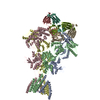 8vutMC 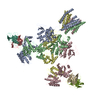 8vuhC 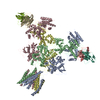 8vujC 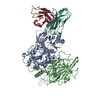 8vulC 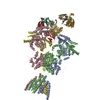 8vunC 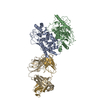 8vuqC  8vurC 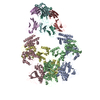 8vusC 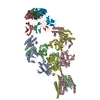 8vuuC 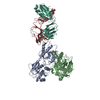 8vuvC  8vuyC 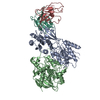 8vvhC M: atomic model generated by this map C: citing same article ( |
|---|---|
| Similar structure data | Similarity search - Function & homology  F&H Search F&H Search |
- Links
Links
| EMDB pages |  EMDB (EBI/PDBe) / EMDB (EBI/PDBe) /  EMDataResource EMDataResource |
|---|---|
| Related items in Molecule of the Month |
- Map
Map
| File |  Download / File: emd_43539.map.gz / Format: CCP4 / Size: 244.1 MB / Type: IMAGE STORED AS FLOATING POINT NUMBER (4 BYTES) Download / File: emd_43539.map.gz / Format: CCP4 / Size: 244.1 MB / Type: IMAGE STORED AS FLOATING POINT NUMBER (4 BYTES) | ||||||||||||||||||||||||||||||||||||
|---|---|---|---|---|---|---|---|---|---|---|---|---|---|---|---|---|---|---|---|---|---|---|---|---|---|---|---|---|---|---|---|---|---|---|---|---|---|
| Projections & slices | Image control
Images are generated by Spider. | ||||||||||||||||||||||||||||||||||||
| Voxel size | X=Y=Z: 0.856 Å | ||||||||||||||||||||||||||||||||||||
| Density |
| ||||||||||||||||||||||||||||||||||||
| Symmetry | Space group: 1 | ||||||||||||||||||||||||||||||||||||
| Details | EMDB XML:
|
-Supplemental data
-Half map: #1
| File | emd_43539_half_map_1.map | ||||||||||||
|---|---|---|---|---|---|---|---|---|---|---|---|---|---|
| Projections & Slices |
| ||||||||||||
| Density Histograms |
-Half map: #2
| File | emd_43539_half_map_2.map | ||||||||||||
|---|---|---|---|---|---|---|---|---|---|---|---|---|---|
| Projections & Slices |
| ||||||||||||
| Density Histograms |
- Sample components
Sample components
-Entire : Human GluN1-2A with IgG 008-218
| Entire | Name: Human GluN1-2A with IgG 008-218 |
|---|---|
| Components |
|
-Supramolecule #1: Human GluN1-2A with IgG 008-218
| Supramolecule | Name: Human GluN1-2A with IgG 008-218 / type: complex / ID: 1 / Parent: 0 / Macromolecule list: all |
|---|---|
| Source (natural) | Organism:  Homo sapiens (human) Homo sapiens (human) |
-Macromolecule #1: Glutamate receptor ionotropic, NMDA 1
| Macromolecule | Name: Glutamate receptor ionotropic, NMDA 1 / type: protein_or_peptide / ID: 1 / Number of copies: 2 / Enantiomer: LEVO |
|---|---|
| Source (natural) | Organism:  Homo sapiens (human) Homo sapiens (human) |
| Molecular weight | Theoretical: 91.923094 KDa |
| Recombinant expression | Organism:  |
| Sequence | String: KIVNIGAVLS TRKHEQMFRE AVNQANKRHG SWKIQLNATS VTHKPNAIQM ALSVCEDLIS SQVYAILVSH PPTPNDHFTP TPVSYTAGF YRIPVLGLTT RMSIYSDKSI HLSFLRTVPP YSHQSSVWFE MMRVYSWNHI ILLVSDDHEG RAAQKRLETL L EERESKAE ...String: KIVNIGAVLS TRKHEQMFRE AVNQANKRHG SWKIQLNATS VTHKPNAIQM ALSVCEDLIS SQVYAILVSH PPTPNDHFTP TPVSYTAGF YRIPVLGLTT RMSIYSDKSI HLSFLRTVPP YSHQSSVWFE MMRVYSWNHI ILLVSDDHEG RAAQKRLETL L EERESKAE KVLQFDPGTK NVTALLMEAK ELEARVIILS ASEDDAATVY RAAAMLNMTG SGYVWLVGER EISGNALRYA PD GILGLQL INGKNESAHI SDAVGVVAQA VHELLEKENI TDPPRGCVGN TNIWKTGPLF KRVLMSSKYA DGVTGRVEFN EDG DRKFAN YSIMNLQNRK LVQVGIYNGT HVIPNDRKII WPGGETEKPR GYQMSTRLKI VTIHQEPFVY VKPTLSDGTC KEEF TVNGD PVKKVICTGP NDTSPGSPRH TVPQCCYGFC IDLLIKLART MNFTYEVHLV ADGKFGTQER VNNSNKKEWN GMMGE LLSG QADMIVAPLT INNERAQYIE FSKPFKYQGL TILVKKEIPR STLDSFMQPF QSTLWLLVGL SVHVVAVMLY LLDRFS PFG RFKVNSEEEE EDALTLSSAM WFSWGVLLNS GIGEGAPRSF SARILGMVWA GFAMIIVASY TANLAAFLVL DRPEERI TG INDPRLRNPS DKFIYATVKQ SSVDIYFRRQ VELSTMYRHM EKHNYESAAE AIQAVRDNKL HAFIWDSAVL EFEASQKC D LVTTGELFFR SGFGIGMRKD SPWKQNVSLS ILKSHENGFM EDLDKTWVRY QECDSRSNAP ATLTFENMAG VFMLVAGGI VAGIFLIFIE IAYKRHK UniProtKB: Glutamate receptor ionotropic, NMDA 1 |
-Macromolecule #2: Glutamate receptor ionotropic, NMDA 2A
| Macromolecule | Name: Glutamate receptor ionotropic, NMDA 2A / type: protein_or_peptide / ID: 2 / Number of copies: 2 / Enantiomer: LEVO |
|---|---|
| Source (natural) | Organism:  Homo sapiens (human) Homo sapiens (human) |
| Molecular weight | Theoretical: 90.704898 KDa |
| Recombinant expression | Organism:  |
| Sequence | String: LNIAVMLGHS HDVTERELRT LWGPEQAAGL PLDVNVVALL MNRTDPKSLI THVCDLMSGA RIHGLVFGDD TDQEAVAQML DFISSHTFV PILGIHGGAS MIMADKDPTS TFFQFGASIQ QQATVMLKIM QDYDWHVFSL VTTIFPGYRE FISFVKTTVD N SFVGWDMQ ...String: LNIAVMLGHS HDVTERELRT LWGPEQAAGL PLDVNVVALL MNRTDPKSLI THVCDLMSGA RIHGLVFGDD TDQEAVAQML DFISSHTFV PILGIHGGAS MIMADKDPTS TFFQFGASIQ QQATVMLKIM QDYDWHVFSL VTTIFPGYRE FISFVKTTVD N SFVGWDMQ NVITLDTSFE DAKTQVQLKK IHSSVILLYC SKDEAVLILS EARSLGLTGY DFFWIVPSLV SGNTELIPKE FP SGLISVS YDDWDYSLEA RVRDGIGILT TAASSMLEKF SYIPEAKASC YGQMERPEVP MHTLHPFMVN VTWDGKDLSF TEE GYQVHP RLVVIVLNKD REWEKVGKWE NHTLSLRHAV WPRYKSFSDC EPDDNHLSIV TLEEAPFVIV EDIDPLTETC VRNT VPCRK FVKINNSTNE GMNVKKCCKG FCIDILKKLS RTVKFTYDLY LVTNGKHGKK VNNVWNGMIG EVVYQRAVMA VGSLT INEE RSEVVDFSVP FVETGISVMV SRSNGTVSPS AFLEPFSASV WVMMFVMLLI VSAIAVFVFE YFSPVGYNRN LAKGKA PHG PSFTIGKAIW LLWGLVFNNS VPVQNPKGTT SKIMVSVWAF FAVIFLASYT ANLAAFMIQE EFVDQVTGLS DKKFQRP HD YSPPFRFGTV PNGSTERNIR NNYPYMHQYM TKFNQKGVED ALVSLKTGKL DAFIYDAAVL NYKAGRDEGC KLVTIGSG Y IFATTGYGIA LQKGSPWKRQ IDLALLQFVG DGEMEELETL WLTGICHNEK NEVMSSQLDI DNMAGVFYML AAAMALSLI TFIWEHLF UniProtKB: Glutamate receptor ionotropic, NMDA 2A |
-Macromolecule #3: 008-218 Heavy
| Macromolecule | Name: 008-218 Heavy / type: protein_or_peptide / ID: 3 / Number of copies: 2 / Enantiomer: LEVO |
|---|---|
| Source (natural) | Organism:  Homo sapiens (human) Homo sapiens (human) |
| Molecular weight | Theoretical: 23.367164 KDa |
| Recombinant expression | Organism:  Homo sapiens (human) Homo sapiens (human) |
| Sequence | String: EVQLVESGGG LVQPGRSLRL SCAASGFTFD DYAMHWVRQV PGKGLEWVSG ISWSSGSIGY ADSVKGRFTI SRDNAKNSLY LQMNSLRAE DTALYYCAKD RASSWYAYGM DVWGQGTLVT VSSASTKGPS VFPLAPSSKS TSGGTAALGC LVKDYFPEPV T VSWNSGAL ...String: EVQLVESGGG LVQPGRSLRL SCAASGFTFD DYAMHWVRQV PGKGLEWVSG ISWSSGSIGY ADSVKGRFTI SRDNAKNSLY LQMNSLRAE DTALYYCAKD RASSWYAYGM DVWGQGTLVT VSSASTKGPS VFPLAPSSKS TSGGTAALGC LVKDYFPEPV T VSWNSGAL TSGVHTFPAV LQSSGLYSLS SVVTVPSSSL GTQTYICNVN HKPSNTKVDK KV |
-Macromolecule #4: 008-218 Light
| Macromolecule | Name: 008-218 Light / type: protein_or_peptide / ID: 4 / Number of copies: 2 / Enantiomer: LEVO |
|---|---|
| Source (natural) | Organism:  Homo sapiens (human) Homo sapiens (human) |
| Molecular weight | Theoretical: 22.380652 KDa |
| Recombinant expression | Organism:  Homo sapiens (human) Homo sapiens (human) |
| Sequence | String: NFMLTQPHSV SESPGKTVTI SCTRSSGSIA SNYVQWYQQR PGSSPTTVIY DDNQRPSGVP NRFSGSIDSS SNSASLIISG LKTEDEADY YCQSTRVFGG GTKLTVLGQP KAAPSVTLFP PSSEELQANK ATLVCLISDF YPGAVTVAWK ADSSPVKAGV E TTTPSKQS ...String: NFMLTQPHSV SESPGKTVTI SCTRSSGSIA SNYVQWYQQR PGSSPTTVIY DDNQRPSGVP NRFSGSIDSS SNSASLIISG LKTEDEADY YCQSTRVFGG GTKLTVLGQP KAAPSVTLFP PSSEELQANK ATLVCLISDF YPGAVTVAWK ADSSPVKAGV E TTTPSKQS NNKYAASSYL SLTPEQWKSH RSYSCQVTHE GSTVEKTVAP T |
-Experimental details
-Structure determination
| Method | cryo EM |
|---|---|
 Processing Processing | single particle reconstruction |
| Aggregation state | particle |
- Sample preparation
Sample preparation
| Buffer | pH: 7.5 |
|---|---|
| Vitrification | Cryogen name: ETHANE |
- Electron microscopy
Electron microscopy
| Microscope | FEI TITAN KRIOS |
|---|---|
| Image recording | Film or detector model: GATAN K3 (6k x 4k) / Average electron dose: 60.0 e/Å2 |
| Electron beam | Acceleration voltage: 300 kV / Electron source:  FIELD EMISSION GUN FIELD EMISSION GUN |
| Electron optics | Illumination mode: OTHER / Imaging mode: OTHER / Cs: 2.7 mm / Nominal defocus max: 2.2 µm / Nominal defocus min: 0.8 µm |
| Experimental equipment |  Model: Titan Krios / Image courtesy: FEI Company |
- Image processing
Image processing
| Startup model | Type of model: NONE |
|---|---|
| Final reconstruction | Resolution.type: BY AUTHOR / Resolution: 3.7 Å / Resolution method: FSC 0.143 CUT-OFF / Software - Name: cryoSPARC / Number images used: 287872 |
| Initial angle assignment | Type: OTHER |
| Final angle assignment | Type: OTHER |
 Movie
Movie Controller
Controller




























 Z (Sec.)
Z (Sec.) Y (Row.)
Y (Row.) X (Col.)
X (Col.)




































